It’s 8:30 in the morning, Christmas Day, in Belgium and completely dark out. I’m sitting at a table in the kitchen of a fantastic pro-cycling-themed bed and breakfast in Bever, Belgium, on the border of Flanders and Wallonia. In a few hours, weather permitting, it will be light enough to see the Bosberg from the kitchen window. This is not a bad way to spend the holidays.
I’ve spent the morning trying to formulate an apt analogy for what we have just experienced with back-to-back World Cups with a digestif of the Superprestige’s Mol-Zilvermeeercross.
It was a monster three-day weekend. And with two headliners like Hulst and Zonhoven on the same bill, it had a large music festival-type vibe. So I’m thinking Monsters of Rock, which for my purposes can morph into Monsters of Cross. It's not original and maybe a bit on the nose, but it could work. That is until I looked at the headliners for the first Monsters of Rock festival in 1981: Rainbow and Judas Priest. As good as they may be, they are not Hulst and Zonhoven1.
Analogy TBD, the past week was intense, and I’m not talking sparkling water, here2. The CXD Trek Bikes team is supporting 12 athletes during Kerstperiode. The logistics involved in keeping the circus on the road and getting everyone to their race starts on time is on its own enough material for several posts. For this entry, however, I want to concentrate on a few notes I stored away while taking photos on race day.
For even more on the racing, check out Ethan Glading’s Big Picture posts from Hulst and Zonhoven.
Hulst
This is my third trip to the Hulst World Cup, which is a blessing and a curse. On the plus side, I know where the press room is located (too far away), and I know how to get around the venue and hit as many locations as possible during a race.
For the negative, and this will be true for Zonhoven as well, I know what works for a decent race photo and coming up with something new is difficult. It’s a similar challenge we face during the domestic calendar, shooting the same races at the same venues year after year. I also struggled with the same issue a decade ago, shooting video on the mountain bike World Cup circuit. As much as you want to be creative and get that new angle nobody has considered, at the end of the day, you just need to get the shot.
That said, I found this view from across the water that I had never seen before, making Hulst look like a completely different race. Hulst is all about big grassy run-ups and harrowing descents, but this looks more like your everyday Belgian tractor pull. It’s a typical cyclocross scene, but oddly out of place for Hulst.
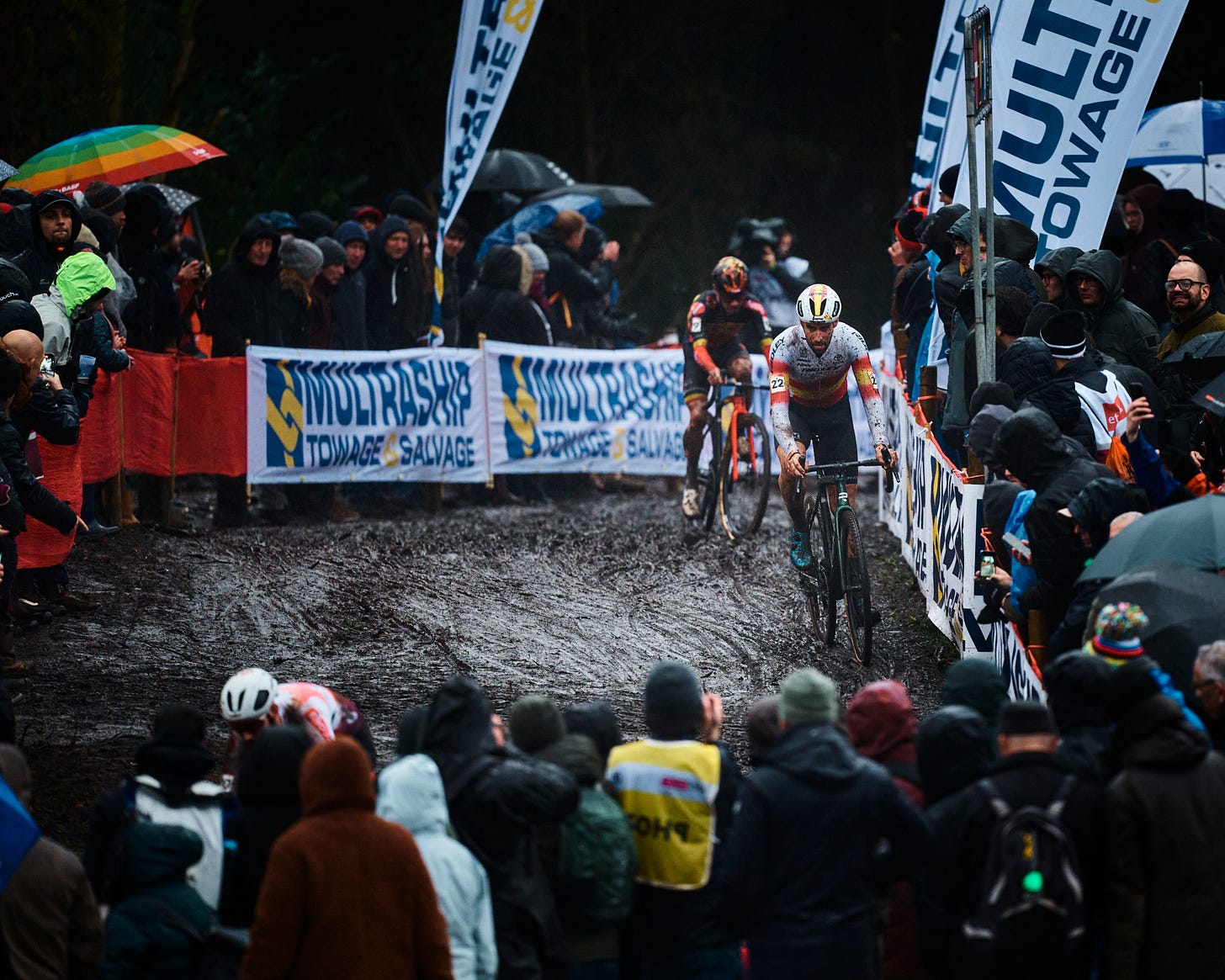
Hulst has two defining features, each using the hillsides that buttress the city’s fortress walls.
After a few centuries of losing and recapturing Hulst from the Spanish, the Dutch constructed walls around the city in the 17th century. The bastion-style fortress uses earthen slopes on the outside of the walls designed to absorb cannon fire from invading forces. Hundreds of years later, these post-medieval earthworks are transformed once a year into the iconic Hulst run-up and the windmill descent, which became the focus of safety concerns after this year’s rain made the off-camber drop more treacherous than usual.
It is difficult to translate how steep the wall run-up is when all you see is a straight-on shot of the feature on the broadcast. My rule of thumb is that if you can reach out with your arm and touch the ground without significantly bending over, that’s irrefutably steep3.
The best part of the elite races at Hulst is that we had two first-time World Cup winners, Marie Schreiber and Niels Vandeputte. Both riders excelled in the difficult conditions, putting on an absolute clinic on how to ride this track.
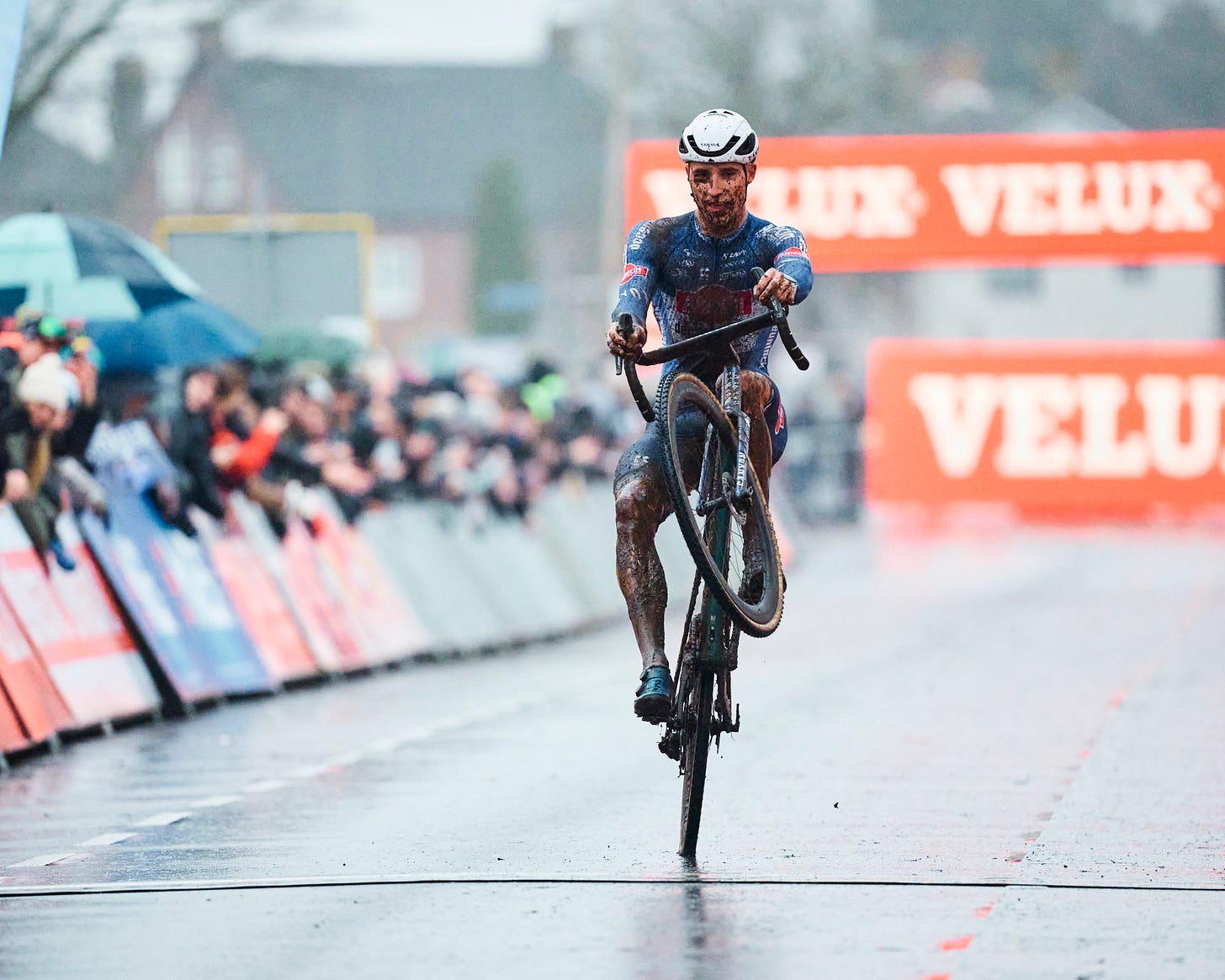
Zonhoven
Nobody visits the Taj Mahal just to see the Mehmankhana. That doesn’t mean the mausoleum’s counterbalance isn’t impressive or a worthy destination, but it’s not the reason you’re visiting the Agra District in Uttar Pradesh. This is how I think most people approach Zonhoven: there is more than one interesting feature on the track, but the only true reason anyone makes a pilgrimage to Zonhoven is to witness the enormous sand pit known as De Kuil4.
There were noticeably fewer spectators at Hulst and Zonhoven, which made getting around much easier. I’m not sure why we saw a decline in attendance. For Hulst, it may have been Mathieu van der Poel's absence. But he was at Zonhoven, and the crowd, while impressive, was definitely thinner than in years past.
Along with not getting a true appreciation of how steep the run-up at Hulst is, it isn’t easy to convey via the broadcast just how deep the sand is on the Zonhoven descents. The ruts are more like gulleys.
The biggest question new riders to Zonhoven ask is, “What line should I take on the descents?” Staying to the right on both drops seems like the preferred navigation choice and avoids some of the deeper sand, but in the end, there is no guaranteed safe line.
The world’s leading arenologists theorize that tiny gremlins indigenous to the Limburg province of Belgium reside deep below the sands of the De Kuil waiting to surface once a year to randomly grab the wheels of unsuspecting cyclocross racers.
It can happen to Lucinda Brand, as it did last year, or the back markers. The sand gremlins do not discriminate. You can pick the best line, have your weight correctly distributed and still get thrown from your bike. There is neither rhyme nor reason. Race Zonhoven long enough, and a zand kwelgeest will get you.
All joking aside, crashes at this venue are violent and scary. Although the crowd loves a good tumble, nobody wants to see anyone hurt, and the biggest cheers are reserved for when a rider brushes themself off and hops back on their bike.
However, this doesn’t always happen, and in some instances, riders are forced to retire. During the women’s elite race, Ava Holmgren was having a great race, riding in the top 10, when she went down hard and hit her head on the sand.
Where other riders may have given in to the crowd's urging and returned to the race, I saw a disciplined athlete following protocol. Ava picked herself up from the ground, and as the steward handed back the bike, expecting her to continue, she stopped him, pointed at her head, unbuckled her helmet and rolled the bike off the course.
My sideline interpretation of this interaction was “I hit my head, I may or may not have a concussion, but either way, for the long term, it’s not worth continuing.”

The racing at Zonhoven in the women’s field was thrilling to watch. Zoe Backstedt forced the hand of the field, attacking early and making everyone work hard. Lucinda Brand, the hands-down crowd favorite, chased down Zoe, and it looked like the race would be a battle between the pair. But Ceylin del Carmen Alvarado is on the top of her game, and even with a subpar first half of the race, she was able to find her way to the leaders and eventually leave them behind.
On the men’s side, any question surrounding Mathieu van der Poel’s fitness or continued dominance of the sport was quickly answered as he left nothing to chance, going to the front in the early laps and riding the circuit alone.
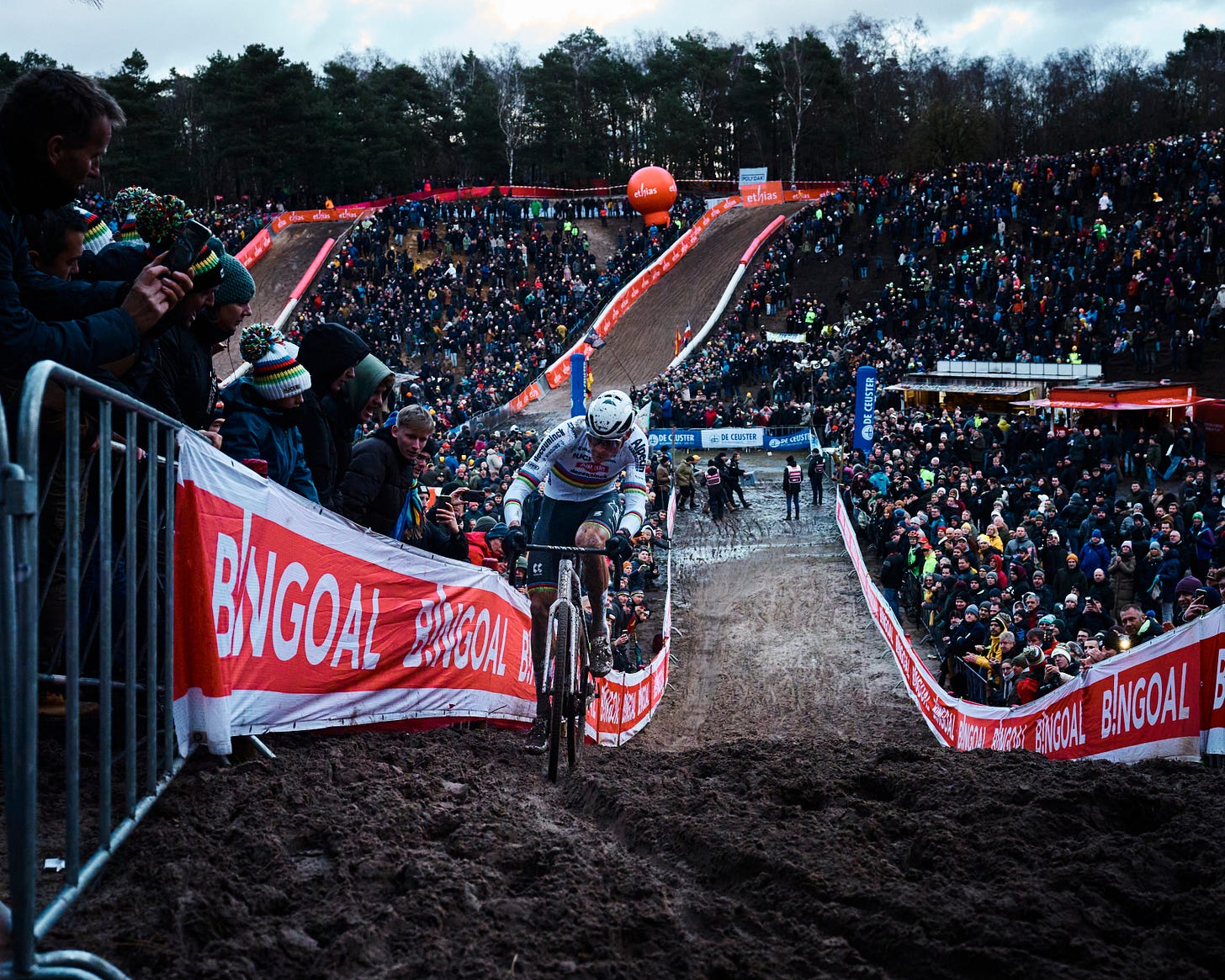
As much as I want to complain about not finding new ways to shoot a race I’ve been to only a few times, it pales in comparison to figuring out new post-ups to do after you’ve won hundreds of races. For Zonhoven, van der Poel pulled out the Salute meets Titanic-King-of-the-World combo.
On Monday, I went to Mol-Zilvermeercross for the first time. What a scene. This has to be the biggest beach party ever held in a winter climate. Thousands of people crowded the shoreline to see Alvarado and van der Poel cap off a near-perfect three days of racing for the Alpecin-Deceuninck. Schreiber was the only non-Alpecin rider to win an elite race.
Looking at the Monsters of Rock history sent me down a rabbit hole to find the largest rock concert ever. Would you believe 1994 Rod Stewart on Copacabana Beach in Rio? With over three million in attendance? Do you think I’m CXy, indeed.
Travel tip: In Belgium and the Netherlands, if you are trying to figure out the difference between sparkling and non-sparkling water varietals, for the most part, the sparkling has the red cap, and the still has the blue cap. If you are outside of these countries, anything goes.
Photo detective tip: Look for horizons and objects in the background to see if the photographer is faking perspective or, in this instance, elevation grade. Look at the steward in the photo who is watching Puck. He is standing straight up and down, not leaning to one side or another. If he were at an angle, the climb would look more (or less) steep.
Arguably, you may also be visiting the race venue to attend the Hondenschool Molenheide Zonhoven. The press room is located in the dog training school’s clubhouse, which overlooks De Kuil. You can see it in the background of this video starting at the 12-second mark.


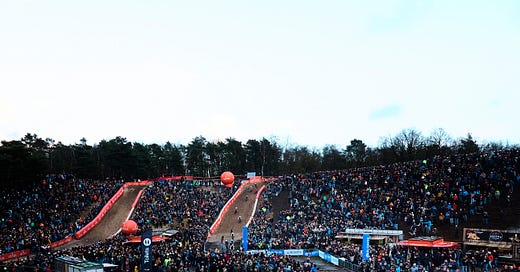



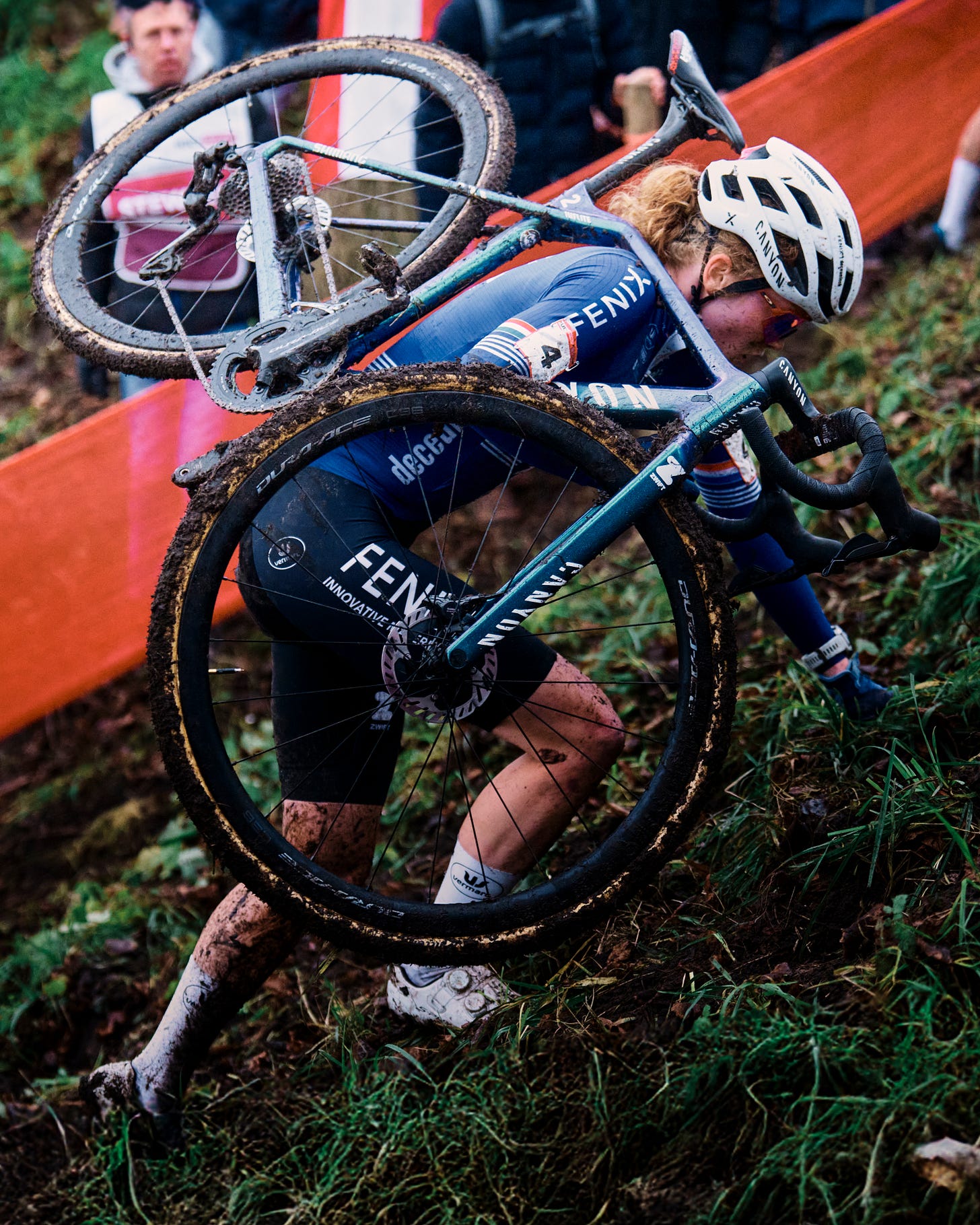

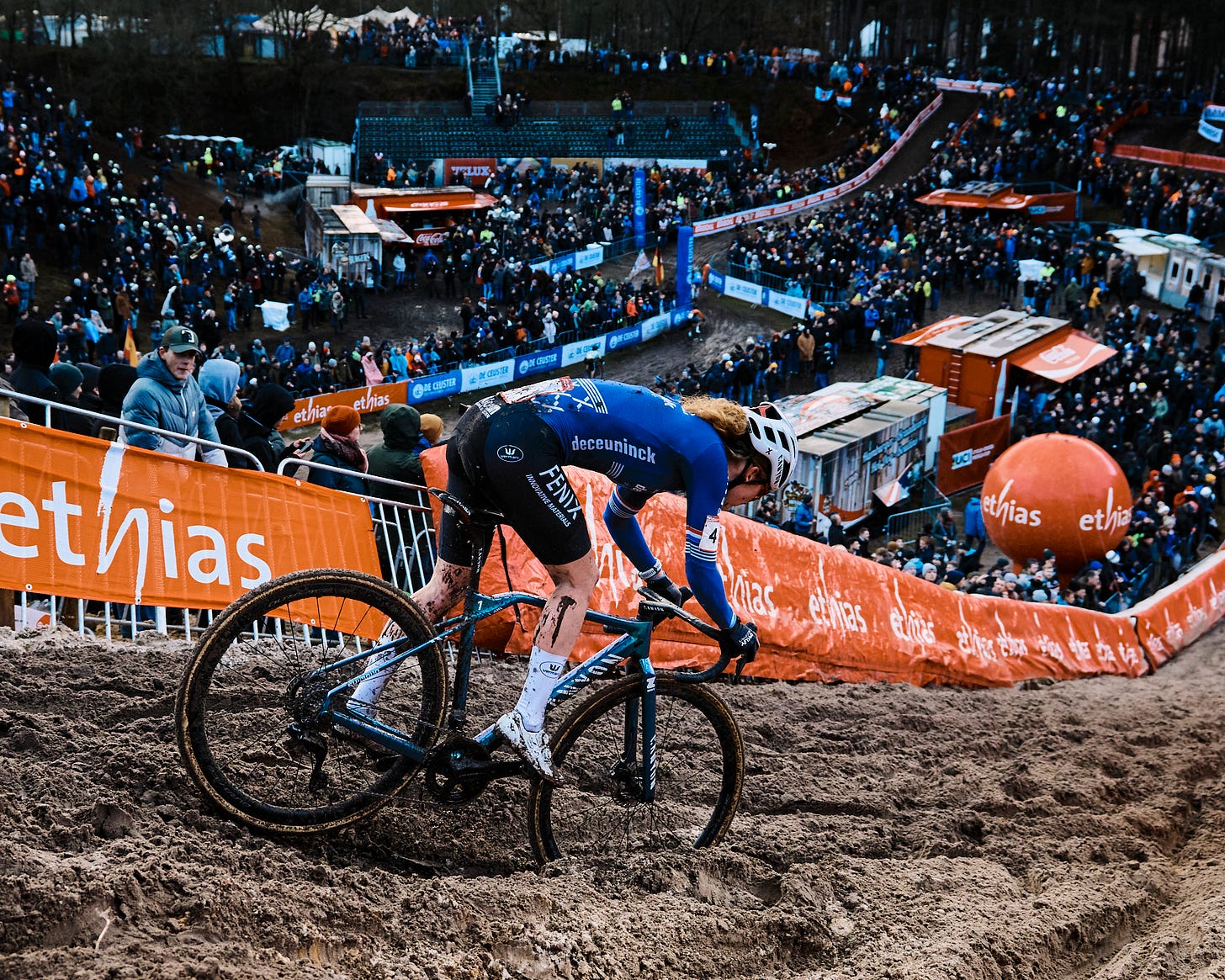
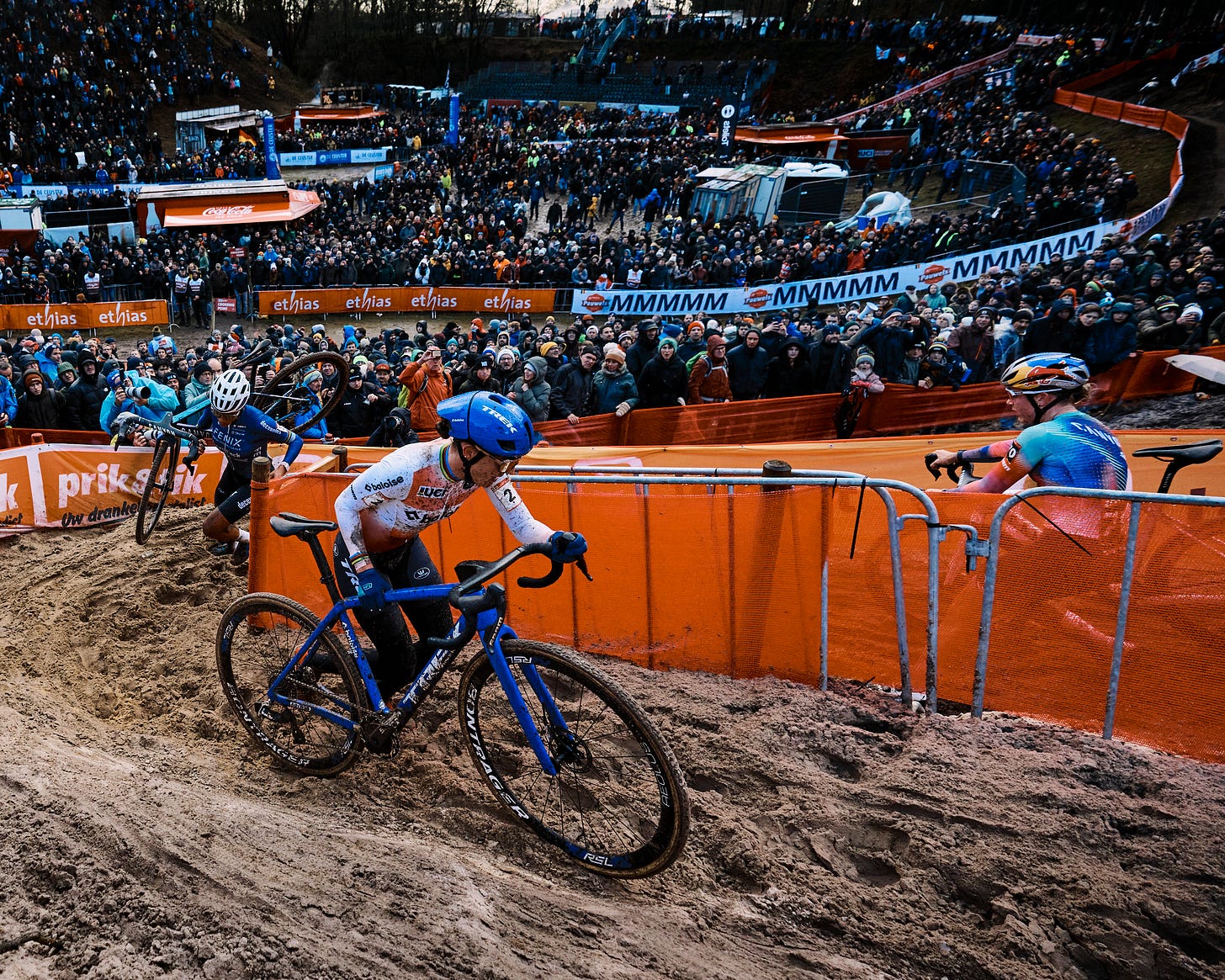
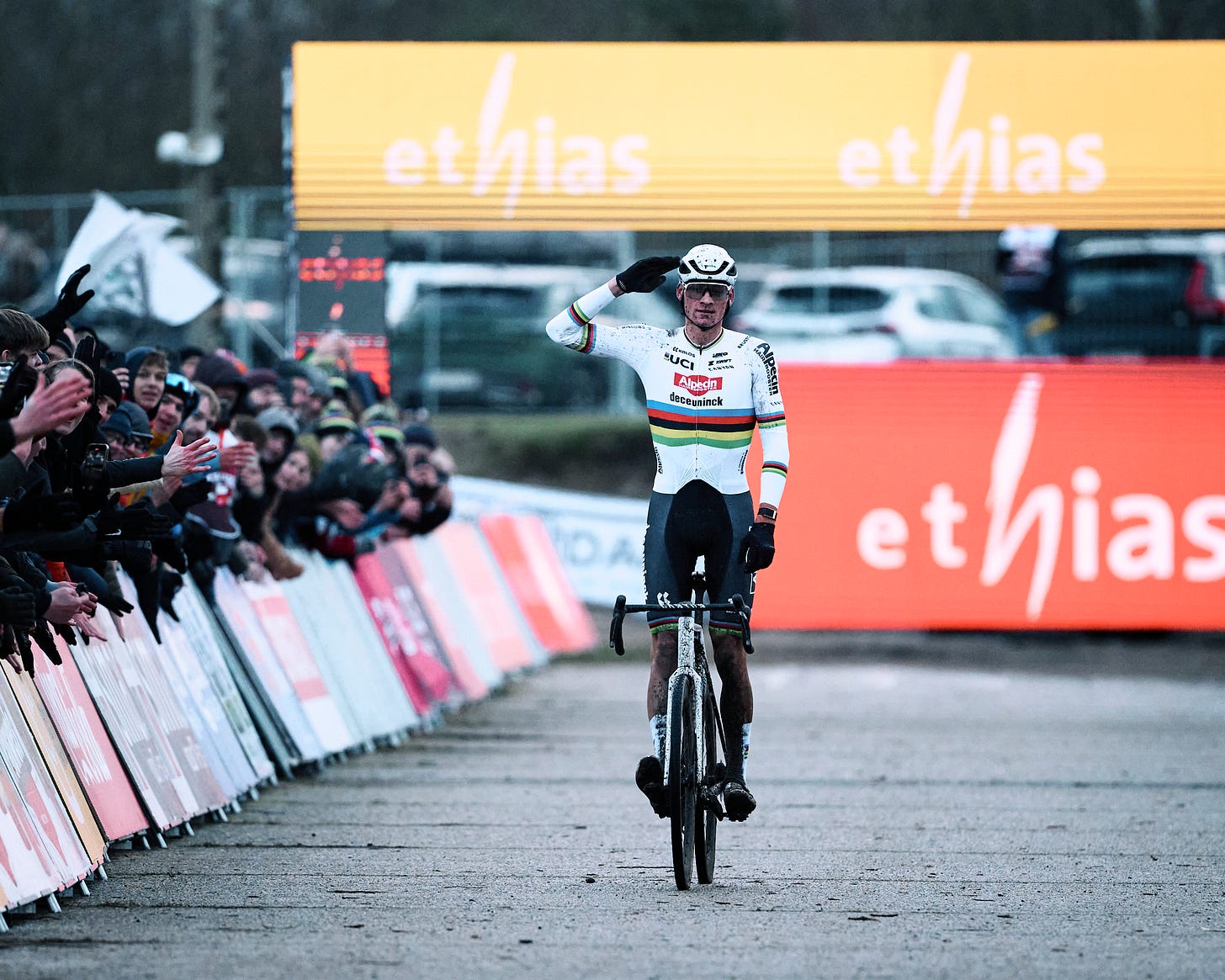
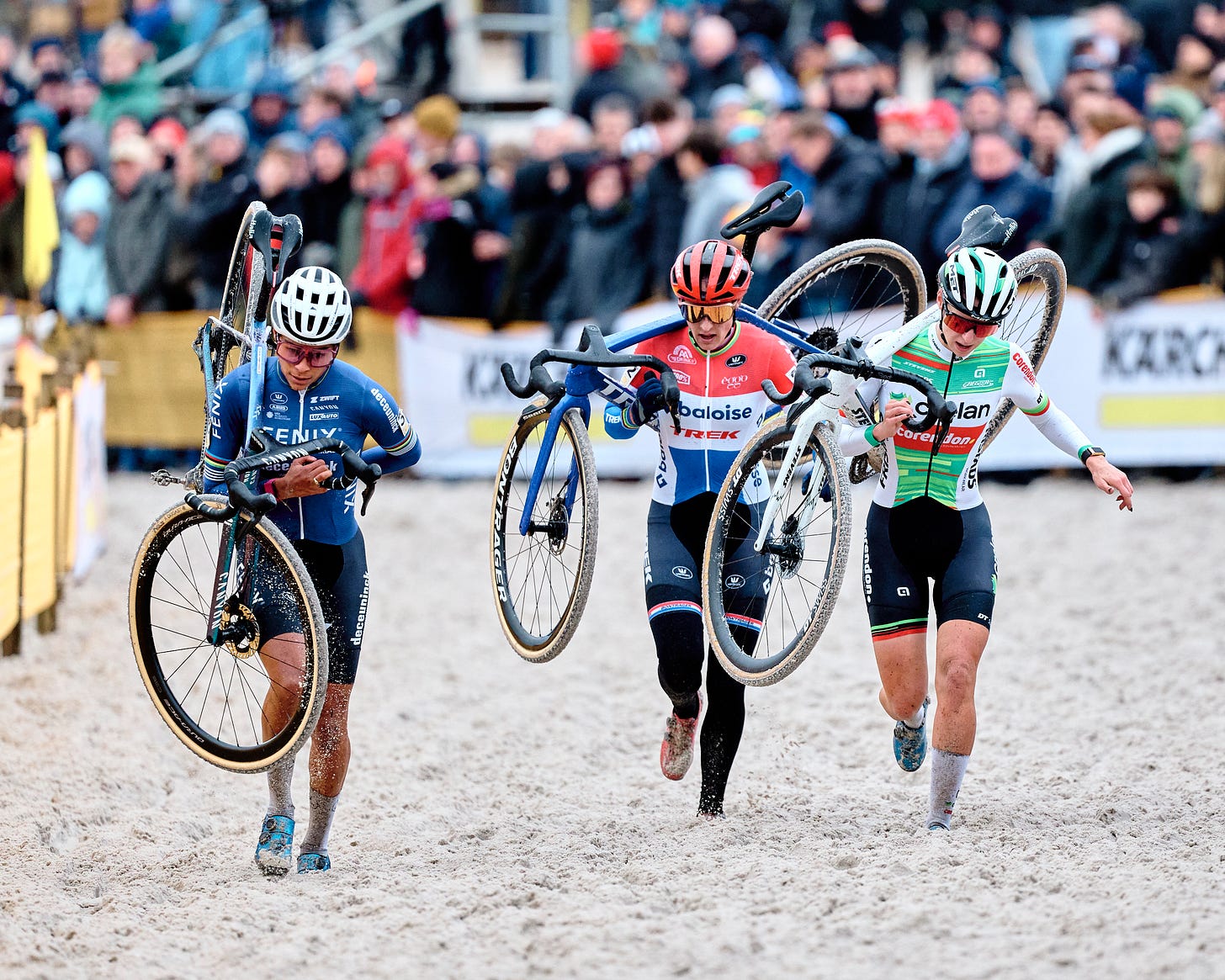
Field Notes are my favorite thing you all do. Really gives me the flavor of each event beyond just the results and how the races played out.
Love this